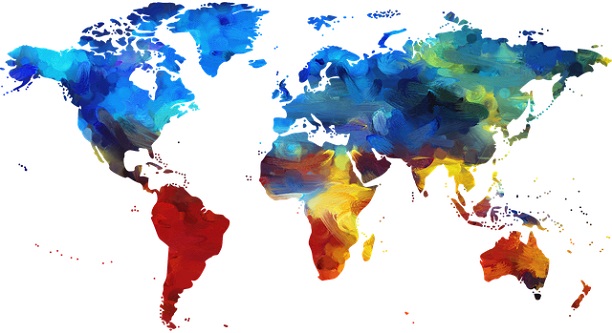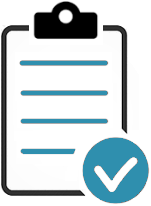Clause 4.1 of ISO 45001:2018 requires the provision of a high-level understanding of key issues that can affect OH&S both positively and negatively within the organization. Using this information will help develop an understanding of internal and external issues and the interaction of activities to help plan and develop controls within the system.
Contents
- What is Understanding the Organization and its Context?
- What Are Internal and External Issues?
- How to Document Internal & External Issues Relevant To Your Organization
- Documenting Internal Issues
- Documenting External Issues
- Examples of Internal Issues
- Examples of External Issues
- Organizational Context Procedure [ISO 45001 Template download]
Internal and external issues are circumstances, characteristics and changes which can positively or negatively influence the OH&S Management System. It is imperative these are identified so that there is clear understanding and appreciation of the operating environment.
Our Organizational Context Procedure is proven to work.
Use a Context & Interested Parties Matrix to document any external and internal issues relevant to your organization's operational purpose and strategic direction that may affect its ability to achieve the intended result of the management system.
To assess whether your organization has a high-level, conceptual understanding of its internal and external issues that affect it, either positively or negatively, its ability to achieve the intended outcomes, you should describe the processes used by your organization to identify internal and external issues and make reference to all objective evidence, including examples of these issues.
Examples of organizational issues might include:
You will need to determine and understand the various health and safety conditions, internal and external issues, typically experienced in your type of organization that can have positive or negative impacts.
The standards do not specify that these internal and external issues, or their monitoring and review, be documented, so there might not be ‘lists of issues’ or records of reviews. However, information can be obtained via interviews with relevant Top Management in relation to your organization’s context and its strategic direction, the identified issues and conditions, and how these may affect the intended outcomes of the management system.

Collate evidence to provide assurance that your organization is regularly, or as necessary, reviewing and updating its external and internal issues. Although there is no requirement for documented information to define the context of the organization, your organization will find it helpful to retain the types of documented information listed below to help demonstrate compliance:
Reviewing your organization’s context could include interviews with senior management, questionnaires, surveys and research. Cross-functional input is essential for the specific expertise required to identify the full breadth of issues, such as finance, training, human resources, commercial, engineering and design, etc. Not only will this ensure a broader appreciation of the context but also wider engagement, particularly with those functions not previously involved with the OH&S Management System.
Our Organizational Context Procedure is proven to work.
Using SWOT and PESTLE Analysis Templates, undertake an analysis of internal and external issues. This provides clear evidence that a comprehensive process has been carried out to understand the context within which your organization operates. This activity will also help to determine the scope of OH&S Management System as required under Clause 4.3 and 9.3.
With the information that is gathered during discussions at all levels of the organization to determine context, it is recommended this information is placed into a report. The benefit of this is it provides a cohesive explanation and a good reference to support present and future business strategy.

Using a SWOT Analysis Template will help you identify and analyze your organization’s strengths, weaknesses, opportunities and threats.
Below are typical examples, however each issue will be focused on the individual organization:
Strengths are characteristics of our organization that allow operation more efficiently and effectively than competitors.
Weaknesses are areas that are recognized as needing improvement.
Opportunities are trends, circumstances or business opportunities that may be taken advantage of.
Threats can be external or internal and are anything that can adversely affect business or operations.
External threats could be economic, new legislation or even a new competitor in the market.
Internal threats could be a skill or staff shortage within our organization.
Our Organizational Context Procedure is proven to work.

A workshop approach often allows ideas to be shared and provides an effective and efficient way of achieving a valuable outcome. The workshop could simply be a discussion identifying the issues that can be mapped out using Political, Environmental, Social, Technological, Legal and Economic (PESTLE) analysis.
This method helps to structure the conversation and will also help to achieve buy-in to what is often seen as a peripheral or niche area.
What is happening politically in the environment in which we operate?
What is happening with respect to ecological and environmental issues?
What is occurring socially and culturally in the markets in which we operate?
What is happening technology-wise which can impact what we do?
What is happening with changes to legislation?
What is happening within the economy?

Ensure that OH&S-related internal and external factors and conditions have been identified that could affect, or be affected by, your organisation’s activities. Ensure that any significant risks and opportunities been identified.
All of the ISO 45001 clauses are fully-documented and explained in our Occupational Health and Safety Management System Template (OH&S).
We have procedures, templates, checklists, process maps, forms and gap analysis tools to help your documentation without missing a single input or output.
Before you invest all the hours reinventing the wheel, before you spend countless dollars outsourcing the task — try our templates.
Updated: 23rd February 2022
Author: Richard Keen

Richard is our Compliance Director, responsible for content & product development.
But most importantly he is ISO's biggest fanboy and a true evangelist of the standards.
Learn more about Richard

Don’t Try to Manage It All Alone!
Our ISO Auditors and OH&S Trainers have been in this industry for years, and since 2002 we’ve been providing thousands of small businesses and large corporations with the tools they need to get certified.
Instead of trying to create everything you need to follow this process from scratch, use ours. We have procedures, templates, checklists, process maps, forms and gap analysis tools to help you control your documented information without missing a single input or output.
Before you invest all the hours reinventing the wheel, before you spend countless dollars outsourcing the task — try our templates.
| QMS ISO 9001 |
EMS ISO 14001 |
OH&S ISO 45001 |
|
Organizational Context Procedure The purpose of this procedure is to outline your organization’s process for the identification and determination of internal and external issues, interested party requirements, management system scope and processes that relate to our health and safety management system, and which influence our strategic direction (where we’re going) and our operational purpose (what we make and do). Forms & Reports also included:
>> Free Download - Control of Calibrated Equipment Procedure - this will give you a good idea of what to expect when you purchase the procedure. |
$19 USD |
Pay by Credit Card, Debit Card, PayPal or Apple Pay.


|
Please read our Money Back Guarantee. |
Are The Templates Suitable For You?
Bought by Small Businesses and Large Corporations our templates have been sold online and CD since 2002.
Used by:
The Templates are used by first-timers following our step-by-step, clause-by-clause guidance documents; and experienced Quality Managers wishing to streamline and improve their existing documentation.
The application of our templates and OH&S manuals is scalable and generic; regardless of the size and type of organization. The elements that form the Health and Safety Management System Template are the same.
Five Reasons To Choose Our Templates
1. Our customizable templates save you time and money by offering a streamlined process to create your quality documentation
2. They’ve got everything you need in one simple template
3. Proven to work our templates have helped thousands of businesses big and small achieve certification
4. Documents use styles to make reformatting and rebranding a breeze
5. Our templates are generalizable for any industry or sector. The application of our templates is scalable and generic; regardless of the size and type of organization.